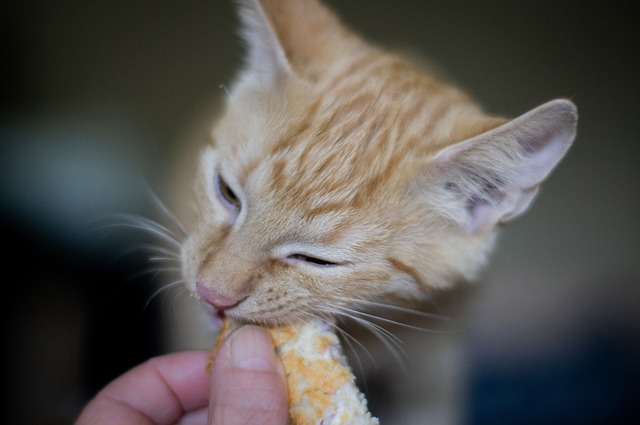If you are a cat owner, you know how important it is to choose the right food for your feline friend. The right nutrition can help your cat maintain a healthy weight, prevent diseases, and ensure a long and happy life. In this article, we'll give you an in-depth guide to choosing healthy cat food, including tips on what to look for, what to avoid, and how to read labels.
Why is Choosing the Right Cat Food Important?
Cats are carnivores, so they need a diet rich in animal protein to stay healthy. A diet that is high in carbohydrates or plant-based protein can lead to health problems such as obesity, diabetes, and digestive issues. In addition to providing the right balance of protein, fats, and carbohydrates, the right cat food should also provide essential vitamins, minerals, and other nutrients that are necessary for your cat's overall health.What to Look for in Cat Food?
When choosing cat food, here are some factors to consider:1. Protein Content
As mentioned earlier, cats need a diet that is rich in animal protein. Look for cat food that lists high-quality sources of animal protein, such as chicken, turkey, beef, or fish, as the first ingredient. Avoid cat food that lists by-products, fillers, or meat meals as the primary source of protein.2. Fat Content
Fat is an essential nutrient that provides your cat with energy and helps to maintain healthy skin and coat. Look for cat food that contains moderate levels of fat, ideally around 20% of the total calories. Avoid cat food that is high in fat, as this can lead to obesity.3. Carbohydrate Content
Cats do not need carbohydrates in their diet, but many commercial cat foods contain high levels of carbs. It is advisable to choose cat foods that contain a minimal amount of carbohydrates, ideally less than 10% of total calories. Avoid cat food that contains grains, corn, or soy as these are common sources of carbohydrates.4. Nutritional Adequacy
It is recommended that you look for cat foods that meet the nutrition standards outlined by AAFCO (Association of American Feed Control Officials). This will ensure that the food contains all the necessary vitamins, minerals, and other nutrients that your cat needs to maintain good health.5. Type of Cat Food
There are several types of cat food available, including dry, wet, and raw. Each has its pros and cons, and the type of food you choose will depend on your cat's preferences and your lifestyle. Dry cat food is convenient and has a longer shelf life, but it can be high in carbohydrates. Wet cat food is more expensive and spoils faster but is often higher in animal protein. Raw cat food is the closest to a cat's natural diet but requires careful handling to prevent foodborne illnesses.
What to Avoid in Cat Food?
When choosing cat food, here are some ingredients to avoid:1. By-Products
By-products are the leftover parts of an animal that are not used for human consumption, such as organs, beaks, and feet. While they are not harmful to cats, they are often lower in quality than muscle meat and do not provide as much nutrition.2. Fillers
Fillers are ingredients that are added to cat food to increase its bulk, such as corn, wheat, and soy. They provide little nutritional value and can contribute to digestive issues.3. Artificial Colors, Flavors, and Preservatives
Artificial colors, flavors, and preservatives are often added to cat food to make it more appealing and to extend its shelf life. However, they can cause health problems such as allergic reactions, digestive issues, and cancer. Look for cat food that is free from artificial additives.4. Grains
Cats are carnivores and do not require grains in their diet. Grains such as corn and wheat are often added to cat food as a cheap source of carbohydrates. However, they can cause digestive issues and contribute to obesity.What are the steps to reading cat food labels effectively?
Reading cat food labels can be confusing, but it's essential to know what you're feeding your cat. Below are some tips to help you easily understand and interpret cat food labels:1. Look for the First Ingredient
The first ingredient listed on the label should be a high-quality source of animal protein. This means that it should be the primary ingredient and not a by-product or filler.2. Check the Guaranteed Analysis
The guaranteed analysis provides information about the nutrient content of the cat food. Look for cat food that contains high levels of protein and moderate levels of fat.3. Check for Nutritional Adequacy
Cat foods that are qualified as "complete and balanced" meets the nutritional requirements set by the AAFCO. Look for this label on cat food to ensure that it contains all the necessary nutrients for your cat.4. Check for Artificial Additives
It is important to choose cat foods that do not contain artificial colors, flavors or preservatives. These can cause health problems in cats.Conclusion
Choosing healthy cat food is crucial to your cat's health and well-being. It is best to choose cat foods that include premium animal protein sources, moderate levels of fat and minimal carbohydrates. Avoid cat food that contains by-products, fillers, grains, and artificial additives. Always check the label for nutritional adequacy and choose the type of cat food that works best for your cat and your lifestyle. With these tips, you'll be able to make the right choice for your feline friend and provide them with the nutrition they need for a long and happy life.




